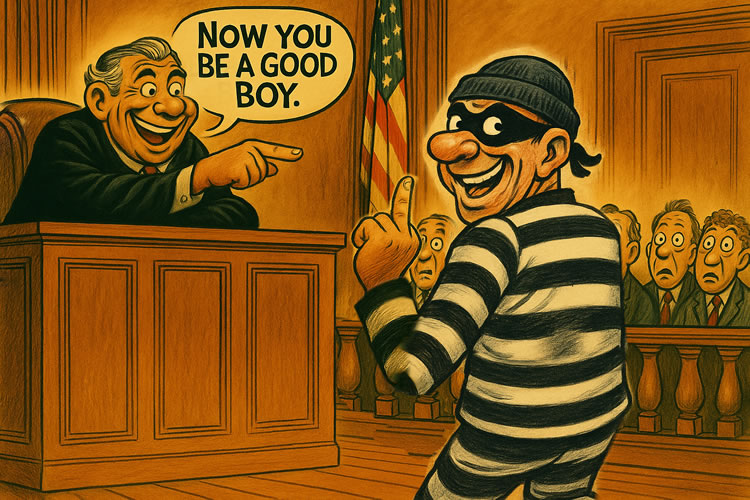Director of National Intelligence Tulsi Gabbard has ignited a fresh debate over media manipulation by U.S. intelligence agencies, claiming that the CIA’s Cold War–era activities never truly ended. Her remarks, made in a recent interview, were followed days later by a CIA whistleblower appearing live with her on the Benny Johnson Show — and his account closely mirrored hers.
In the 1970s, the Senate’s Church Committee and journalist Carl Bernstein revealed that the CIA had cultivated relationships with journalists, editors, and publishers — sometimes paying them outright — to insert pro-U.S. narratives into the press during the Cold War.
While the agency announced in 1976 that it would no longer maintain paid relationships with accredited journalists, it left open the possibility of “voluntary” cooperation — a loophole that critics say could allow the practice to continue in another form.
Gabbard: “It Never Stopped”
In her interview, Gabbard was asked point-blank whether the CIA’s activities, which have come to be known as Operation Mockingbird, are still in effect. “Yes,” she replied, adding that “we are fighting to this day intel operatives that are running disinformation campaigns through the corporate press.” She characterized these efforts as a direct continuation of the Mockingbird model — only now the targets are Americans. According to Gabbard, intelligence insiders selectively leak to favored journalists to shape political narratives, undermine disfavored officials, and protect their own interests, a pattern she ties to the Obama era and the Russiagate years, citing coordinated leaks to outlets like The New York Times and The Washington Post.
Whistleblower: “Same Playbook, Different Era”
Days later, on the Benny Johnson Show, an anonymous former CIA officer described his own experiences: active CIA personnel and contractors “feed information directly to sympathetic journalists” to drive pre-approved narratives — “information warfare turned inward.” Stories are crafted to look like independent journalism but originate inside the intelligence community, echoing Cold War tactics. When Gabbard joined live, she said the account “aligns exactly” with what she has seen as DNI, calling the practice “systemic” and “coordinated.”
Origins of the Mockingbird Model
The activities commonly referred to today as “Operation Mockingbird” trace back to the late 1940s, when the CIA began covertly recruiting journalists, publishers, and media executives — sometimes knowingly, sometimes through intermediaries — to place agency-approved stories in foreign and domestic outlets. Officially, the agency maintained these operations were aimed abroad, but stories planted overseas often cycled back into American newsrooms, effectively smuggling intelligence-driven narratives into U.S. discourse while bypassing restrictions on domestic propaganda.
🍁 Make a One-Time Contribution — Stand Up for Accountability in Vermont 🍁
Gaslighting in Real Time
While “Operation Mockingbird” has no official CIA file under that name, the activities it refers to are a matter of record. The name “Mockingbird” first appeared in journalist Deborah Davis’s 1979 biography Katharine the Great, likely inspired by the CIA’s real “Project Mockingbird,” and over time it evolved into the broader moniker “Operation Mockingbird,” used in media and public discourse to describe the agency’s documented press manipulation programs.
Church Committee hearings in the mid-1970s, Carl Bernstein’s 1977 Rolling Stone exposé naming hundreds of agency-journalist relationships, and declassified CIA files such as the Project Mockingbird transcript all confirm the substance behind the term. Dismissing the name as a “conspiracy theory” without acknowledging these facts is misleading. The only “conspiracy” is over semantics: the name is informal, but the covert activities—recruiting journalists, influencing narratives, and shaping public opinion—are proven. If, as DNI Tulsi Gabbard alleges, similar tactics persist today, they would still fall under the same widely recognized banner.
Loopholes That Never Closed
Two decades after the Church Committee, a 1996 Senate Intelligence Committee hearing showed the CIA’s ties to journalists had never been completely severed. Then–CIA Director John Deutch told lawmakers he opposed using American journalists or clergy as intelligence assets but acknowledged the agency retained legal authority to do so in “exceptional circumstances.” Lawmakers and journalists warned that leaving the loophole open would erode trust; Ted Koppel testified that even the perception of CIA influence endangered reporters’ credibility and safety. The mid-90s acknowledgment bridged Cold War Mockingbird and modern allegations: the name might fade, but the capability — and at times the practice — remained.
Credibility in Context
The intelligence community insists Operation Mockingbird type activities ended in the 1970s. Yet recent history undercuts reflexive denials: the Hunter Biden laptop was cast as “Russian disinformation” despite its authenticity; the Trump–Russia collusion narrative’s predicate was gutted by later investigations; and mass domestic surveillance was denied until Snowden’s disclosures. Supporters of Gabbard’s view argue that covert influence programs are designed to leave plausible deniability even as the machinery persists.
From “Theory” to Testimony
For years, Operation Mockingbird lived as rumor — until Senate investigators and investigative journalists produced documents and witnesses that made denial impossible. Now, nearly half a century later, the sitting Director of National Intelligence says the operation never truly stopped, and a former CIA officer backs her on the record, albeit anonymously. Whether this spurs new disclosures or investigations remains to be seen. But when the people making the denials have been wrong before, who should we believe now?
Dave Soulia | FYIVT
You can find FYIVT on YouTube | X(Twitter) | Facebook | Parler (@fyivt) | Gab | Instagram
#fyivt #OperationMockingbird #CIA #MediaManipulation
Support Us for as Little as $5 – Get In The Fight!!
Make a Big Impact with $25/month—Become a Premium Supporter!
Join the Top Tier of Supporters with $50/month—Become a SUPER Supporter!










Leave a Reply to Paul BilodeauCancel reply